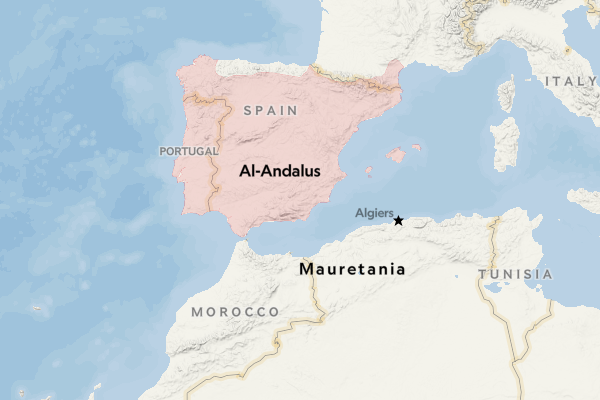Arábica y Español: Linguistic Ancestry
Español, or Spanish, is the third most widely spoken language in the world, trailing only English and Mandarin Chinese. Romance languages (French, Italian, and Spanish) evolved from ancient Latin and were influenced by their natural environments, culture, religion, societies, commerce, and intercultural exchanges. Spanish was considered the official language of Spain in the late 15th century and has Roman roots as early as 3rd century BC! Most people are familiar with the geographic locations of Spanish speakers, such as the many Latin American countries in the global South; but, did you know the language was heavily influenced by the Arabic language? And that even today in Modern Standard Arabic (MSA) and Spanish there are around 4,000 shared words and sounds? ¡Que interesante!
La lengua española is an amalgamation of sounds from around the world. To many people’s surprise, Spanish was shaped, in part, by being a part of everyday life in Al-Andalus (modern day Spain and Portugal) for over 700 years under Islamic rule. In 711 AD General Tariq bin Ziyad was sent from the Moor stronghold in North Africa to conquer the Visigoth empire. The Visigoths were Germanic peoples who took control of Roman territories, creating the kingdom of Spain in the 5th century AD. The last Visigoth, King Roderick was infamous for being an oppressive tyrant and the Moorish army was met with little opposition.
Between 711-1492 AD, Spain was a majority Muslim state also known as Andalusia and was ruled by many dynasties over the centuries. According to historical records Andalusia was a multicultural place filled with Christians, Jews, and Muslims.
Islamic rule and states were centered around the capital of Damascus, Syria. An urban flourishing city that was critical in the early history of the Muslim Arab world and establishing a stronghold between Africa and Asia. Instead of Kings, the political system was led by caliphs, who were considered chief Muslim rulers in a designated area. Each caliph would create a caliphate dynasty based on their family and achievements.
The first caliphate of the Arab Empire was the Umayyad Dynasty, and was established by Abu Safyan, a prestigious merchant from the holiest of cities in Islam, Mecca. Caliphate claims split the Umayyad Dynasty which was ruled by both the Sufyanids, descendants of Abu Safyan, and the Marwanids, descendants of Marwan ibn-al Hakam. The Ummayyad Dynasty ruled the Arab empire under various rulers from 661-750 AD.
In 750 AD the Ummayads were overthrown in Damascus by the Abbasids, descendants of the Prophet Muhammad who claimed rights ruling the caliphate. The Abbasids established the second Arab Muslim dynasty after disposing of all former Ummayads that would challenge their authority.
Amir Abd al-Rahman, an Umayyad survivor, fled to Spain leveraging his caliphate ties to establish his rule in Cordoba, Spain. After overthrowing the governor of Al-Andalus, he used his political and religious influence, drawing in his former supporters and created a golden era where the country was prosperous in architecture, art, and literature. The language, customs, and even architecture were woven into the fabric of Al-Andalus, and when the post-Moor Spanish people crossed the oceans to colonize Mexico’s indigenous populations, they also brought their complex culture and history.
Languages are alive and constantly adapting to humans’ needs. Over time languages naturally evolve and absorb every moment of their beautifully complicated and tumultuous histories. Just think of Chaucer or Shakespeare’s English compared to modern day English. The Spanish language has traveled through Europe, North Africa, Asia, and of course the Americas. With several major dialects: Castilian, Andalusian, Latin American, Mexican, Rioplatense, Colombian and Caribbean Spanish, the language has been shaped and influenced by speakers from around the world. Through the many stages of language evolution, the underlying Arabic and Spanish connections remain today invisible but deeply rooted in all that encompasses Spanish cultures. Most notable are some of the words that are still recognizable today between Arabic and Spanish, even 600 years after the Moors were conquered by Catholic Spain.
Check some of them out below:
The power of language connects us all to create, inspire, and learn from one another. This is why our namesake, Na’atik, derives from the Maya phrase ‘To’on Na’atik’ meaning, ‘We’re understanding each other’ to reflect and emphasize the importance of intercultural exchange and education.
View this increíble video of two native Spanish and Arabic speakers comparing words on YouTube!
If you’re interested in taking your Spanish to the next level, whether beginner, intermediate, or advanced, Na’atik welcomes all learning levels. Visit our website for information on online or immersion Spanish courses.




